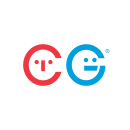Sound, buttoned-up product roadmaps aren’t plotted out overnight — they require long-term thinking and thorough strategic planning.
But as CarGurus found out this spring, it’s the ability to quickly pivot around an unanticipated roadblock that kept them from stalling in the face of change.
As the coronavirus hampered individuals’ abilities to go to dealerships, members of the online auto purchasing platform’s product team had to swiftly find a way to spotlight dealers’ abilities to accommodate shoppers.
“The environment changed so drastically and so quickly,” Group Product Manager Mike Schmidt said. “Our No. 1 priority was figuring out how we could best enable dealers to safely and transparently connect with consumers given these challenging times.”

According to Senior Product Manager Justin Pytka — who spearheaded the efforts to get safe buying experiences featured on the platform to their markets in the U.S., U.K. and Canada — realizing that meant recalibrating existing strategy.
“We knew that this feature was extremely important and urgent for both our dealers and our consumers, so the first step was to agree that this was a top priority,” Pytka said. “That meant aligning on the decision that we were going to pause some other feature testing in order to make this a focus for all the different teams across the company.”
That focus culminated in a feature that now allows visitors to the platform to identify if dealers offer measures like socially distanced appointments, virtual consults and vehicle walkarounds and contact-free purchasing through phone and email.
Key to realizing those efforts in a matter of weeks was wide-ranging cross-collaboration between the product team and litany of departments — including engineering, consumer marketing and customer success, according to Pytka.
“Unique times call for extreme collaboration,” Schmidt said of the efforts.
Recently, Schmidt and Pytka popped the hood on how the Cambridge-based org’s efforts came together expediently, how the teams pulled off the process while working from home and the remote best practices gleaned along the way.
How did your team roll out these features in a timely manner given the needs of the market?
Pytka: First, we had to collect feedback from our dealers and consumers quickly, so we reviewed dealer websites to understand immediately what features they were offering. Then, we tried to summarize those in ways that would be clear and transparent to our car shoppers. Once we had an initial idea, we discussed it with our sales team and gave quick demos with a smaller set of dealers.
Due to the urgency, we parallel-processed the design and engineering implementation with the consumer and dealer outreach, building out some core architectural components and then filling in more refined details and designs as they became available. Even though this required a high level of coordination, it also allowed us to roll out the product much faster than if we sequenced research, design and then development.
We knew that this feature was extremely important and urgent for both our dealers and our consumers.”
How did you collect user feedback, and how did you iterate off of it to inform the product?
Pytka: The fastest method of feedback was reviewing how dealers were already responding and developing their contactless solutions. Once we had a draft based on that research, we collected feedback from both our internal sales teams and our dealers. As our consumers and dealers reached out with questions or requests, we considered them as they came in to see whether the option would be more broadly applicable.
Changing Sentiments
How did research gathered inform elements like user experience?
Schmidt: It was deciding how we could be very clear and not confuse consumers on what these contactless services offer versus some of the other features that we already advertise. We put it to our UX team to help us decide how we could design a very intuitive user experience and really highlight it across the site. We also put it on our marketing teams to figure out a whole marketing campaign around how it should look on our homepage. For example, should we put a banner on every single page of our site to really drive home that these new features are available?

What best collaboration practices did you pick up in the process?
Schmidt: One great thing about CarGurus is that each project team is allowed a lot of autonomy and how we decide what our product development process should be. During work from home, it’s about doubling down on best practices. I think teams that have a slightly more structured development process — with frequent check-ins or stand-ups and have scheduled planning and refinement meetings for actual engineering work — have made an easier transition to working from home. It takes less effort to wrangle consensus on a path forward.
Also, another new management skill that’s become really important is finding ways to build rapport across a team in a way that doesn’t just feel like you’re adding another Zoom meeting to someone’s calendar.
Staying Connected
What sort of success and feedback have you seen with the contactless services?
Pytka: We decided early on that this product should be free to our dealers and car shoppers, and required dealers to opt-in before adding the feature to their listings on CarGurus. Therefore, we focused our efforts on educating dealers about the product and encouraging them to sign up. In terms of success, to date, thousands of dealers across our global markets have opted into our contactless services.
With this under the team’s belt, how do you think this lays a strong foundation for the future?
Schmidt: This was a completely unique moment in time, where we had to drop what we were doing and react quickly. Any moment like that is going to force you to collaborate and work with teams you don’t generally work with. I think having to have a singular focus for a short moment in time will help us as we roll out more features.














